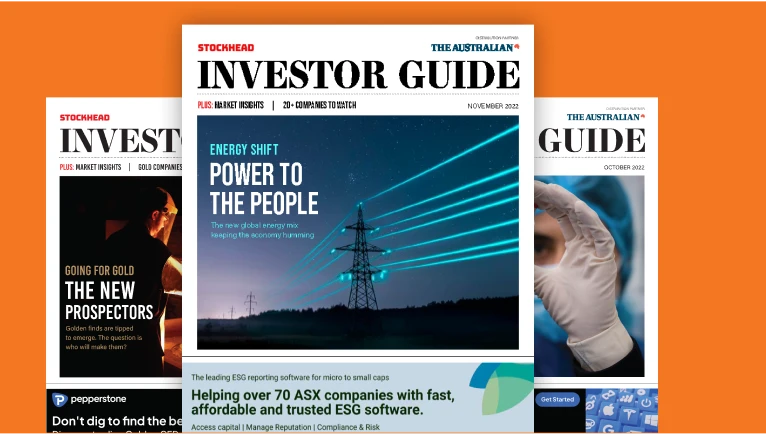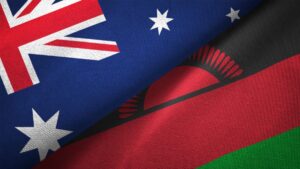Victoria’s rare earth hopefuls are lining up to hit the market

Pic via Getty Images
- Major project status has Victorian mineral sands and rare earths mine on fast track
- VHM boss Ron Douglas says government support is encouraging as world seeks ex-China rare earths supply
- Fellow Victorian companies buoyed by VHM’s success
The rare earth market may have seen better days, but government support is providing confidence to emerging players as Australian companies try to make inroads in the Chinese-dominated market.
Victorian mineral sands and rare earths pioneer VHM (ASX:VHM) has taken another significant step forward, yesterday receiving notification of major project status from the federal government for its Goschen project in northern Victoria.
The proposed mine will cost around $160 million for its first stage, producting dual revenue streams in the form of 69,000tpa of a zircon/titanium heavy mineral concentrate and 4300tpa of a rare earth mineral concentrate for its first three years.
VHM will then look to self-fund its larger second stage, where processing capacity will lift from 1.5Mtpa to 5Mtpa with concentrates production lifting to 134,000tpa and 9000tpa respectively.
The federal support comes hot on the heels of endorsement last December from Victoria’s planning minister for Goschen’s environmental effects statement, and shows its hand with its intention to support the development of an ex-China supply chain for the crucial future facing metals.
“Our primary activity last year was getting our primary permit, the environmental effects statement. That was awarded in December and that gives us access to go back to government and seek their support,” VHM executive director and CEO Ron Douglas said on the sidelines of the RIU Explorers Conference in Fremantle yesterday.
“We’ve just as of moments ago been given major project status by the federal government.
“We’d certainly like to see more support as well.
“We’ve got an interesting position in that we’ve got two resource streams which are urbanisation (mineral sands) and the critical minerals (rare earths).
“So it’s a great story, great project and the government’s starting to get behind it.”
Government support lifts for rare earths
The significance of Goschen and other projects like it has not gone unnoticed by the federal government.
According to Benchmark Mineral Intelligence, of the US$3.1bn funding committed to rare earths projects in 2024, some 84% came from government sources.
Canberra has put plenty of skin, and public cash, in the game.
It’s tipped an initial $1.25bn in the form of a loan into a refinery being build in WA by Iluka Resources (ASX:ILU), coming to the table again with a further $400m loan to cover a cost blowout at the Eneabba plant.
Gina Rinehart backed Arafura Rare Earths (ASX:ARU) has close to ~$1bn committed from Australia, including $200m the National Reconstruction Fund, the first mine to receive such an investment.
Douglas says investment is needed to make for a ’20-year head start’ given to China as Western economies outsourced production of the permanent magnets used in EV motors, aircons, defence and wind turbines.
“We can’t replace all that overnight,” Douglas said.
“So it is a bit of a journey. The starting point is actually doing what we do really well in Australia. We’re absolutely great at agriculture and absolutely great at mining.
“Step one is get to producing a concentrate
“As we learn we will develop the supply chains into downstream production and the input the government’s given to Iluka and the work that Lynas is doing and Arafura also, means that we are developing those midstream processes that leads to the production of the magnets which are going to power our future.
“So we’re moving in the right direction but we won’t get there overnight, it will take time.”
Douglas says there is room for the government to act as “insurance” to encourage investors to put capital into Australian rare earths projects, given the opacity of the NdPr market, which could deter financiers.
Just two major producers of light rare earths exists outside China and adjacent countries like Myanmar – WA’s Lynas and America’s MP Materials, with the Brazilian based Serra Verde currently in ramp up.
Heavy rare earths supply is virtually entirely concentrated in China and Myanmar, with over 90% of the downstream permanent magnet sector also controlled by the Middle Kingdom, giving its producers a unique ability to control prices.
Renaissance era
A final investment decision is due for Goschen later this year, with production potentially on the cards as soon as the end of 2026, the first new Victorian mining operation in several years.
Once in production, though, Douglas says it will be a significant economic contributor for years to come.
“This asset will be worked on by my children’s children,” he said.
“We have 890 million tonnes of resource, some 200Mt of reserve at a good grade, because we’re in a sand setting, so it’s very easy to mine, it is truck and shovel, processing is gravity and nature did the work for us.
“The upside is significant. If you go back in time, Melbourne’s sandstone buildings were built off the back of gold mining in Ballarat and Bendigo and at one point in time they were the richest city in the world.
“This is an opportunity for Melbourne and Victoria to once again see that pinnacle of success come through on the back of mining.”
It’s all about confidence, baby
Fellow Victorian mineral sands player ACDC Metals (ASX:ADC) has received a shot in the arm by proxy watching VHM navigate the permitting pathway at Goschen.
ACDC upgraded its indicated and inferred resource at the nearby Goschen Central deposit in December to 620Mt at 2.2% heavy minerals, 8.4% rutile and 3% monazite, a mineral containing rare earth metals.
Its CEO Tom Davidson said VHM’s progress was encouraging for the $4m junior.
“We all want to see each other do well and especially Victoria hasn’t seen a mine and project approved in a long time, so we really want to see those first ones get off the rank and get going,” he said.
“It provides confidence and validation in generating these projects and the flow sheet and the mineralisation style.
“If investors and banks and brokers can see returns on these projects, then it gives encouragement for the next one down the stream.”
ACDC is planning to first produce a mineral concentrate at the mine, then head further downstream via a ‘caustic crack’ plant located across state lines in South Australia.
The process has the promise of separating rare earths with far lower waste by-products.
“For our projects we’ve gone down the path of the caustic crack process.
“When you get the monazite you can treat it either with sulfonation, which is similar to what Iluka’s doing with Eneabba, or you can do the caustic crack.
“We’ve gone with the caustic crack, which has stronger ESG credentials, so we would only produce maybe 0.2 to 0.4 to 1 waste ratio versus a 3 to 4 to 1 ratio.”
At Stockhead, we tell it like it is. While VHM is a Stockhead advertiser, it did not sponsor this article.
Related Topics

UNLOCK INSIGHTS
Discover the untold stories of emerging ASX stocks.
Daily news and expert analysis, it's free to subscribe.
By proceeding, you confirm you understand that we handle personal information in accordance with our Privacy Policy.








